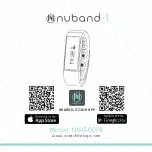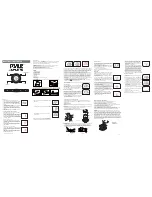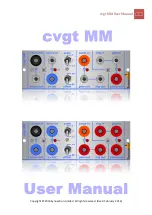
System Exclusive Protocol
K2vx System Exclusive Implementation
30-2
decimal:
132
binary:
10000100
binary encoding for type(2) field:
0000001 0000100
decimal encoding for type(2) field:
1 4
Object name Þelds are sent as a string of ASCII values in a ÔnameÕ Þeld, with one MIDI byte of
zero as a string terminator. For example, the name ÒGlass KazooÓ would be sent as letters:
G
l
a
s
s
_
K
a
z
o
o <null>
hex encoding for ‘name’ field:
47
6C
61
73
73
20
4B
61
7A
6F
6F 00
Data sizes and offsets are sent in the ÔsizeÕ and ÔoffsÕ Þelds.These values refer to quantities of 8-
bit bytes in the K2vxÕs memory, which is packed in the ÔdataÕ Þeld.
Binary data in the ÔdataÕ Þeld is sent by in one of two formats, according to the value of the
ÔformÕ Þeld. If the ÔformÕ Þeld equals zero, the data is transmitted as 4 bits or one ÒnibbleÓ in
every MIDI byte. If the ÔformÕ Þeld equals one, then the data is sent as a compressed bit-stream,
with 7 bits per midi byte. The bit-stream format is more efÞcient for data-transmission, while
the nibble format is easier to read (and write software for).
For example, to send the following four K2vx data bytes,
hex:
4F
D8
01
29
decimal:
79
216
1
41
binary:
01001111
11011000
00000001
00101001
eight MIDI bytes are sent in ÒnibbleÓ format:
hex:
04
0F
0D
08
00
01
02
09
decimal:
4
15
13
8
0
1
2
9
binary:
0000100
0001111
0001101
0001000
0000000
0000001
0000010
0001001
Þve MIDI bytes are sent in bit-stream format:
hex:
27
76
0
12
48
decimal:
39
118
0
18
72
binary:
0100111
1110110
0000000
0010010
1001000
The bit-stream format can be thought of as taking the binary bits of the K2vx data and, starting
from the left, slicing off groups of 7 bits. Note that the trailing bits are set to zero.
After the ÔdataÕ Þeld, there is another Þeld, ÔxsumÕ. This is a checksum Þeld which is calculated
as the least signiÞcant 7-bits of the sum of all of the MIDI bytes that make up the ÔdataÕ Þeld.
Messages
This section deÞnes the K2vx System Exclusive message formats. Each message has a message
type (that goes in the Ômsg-typeÕ Þeld; see Common Format, above), followed by the Þeld
deÞnitions of the message.
Summary of Contents for K2500RS
Page 12: ...Table of Contents TOC 12...
Page 16: ...Introduction How to use this manual 1 4...
Page 32: ...User Interface Basics The Panel Play Feature K2vxR 3 8...
Page 106: ...Effects Mode and the Effects Editor Configurations and Parameters 9 24...
Page 186: ...Song Mode Recording Multi timbral Sequences via MIDI 12 52...
Page 304: ...DSP Functions Hard Sync Functions 14 52...
Page 394: ...Programs Setups and Keymaps K2500 ROM Keymaps 21 12...
Page 402: ...LFOs LFO Shapes 23 4...
Page 406: ...Note Numbers and Intonation Tables List and Description of Intonation Tables 24 4...
Page 434: ...DSP Algorithms 26 14...
Page 450: ...MIDI and SCSI Sample Dumps SMDI Sample Transfers 29 8...
Page 464: ...Glossary 31 6...
Page 490: ...K2vx Program Farm VOX K25 Appendix A 22...
Page 494: ...K2vx Compatibility Converting programs from the K2vx to K2000 Appendix B 4...
















































